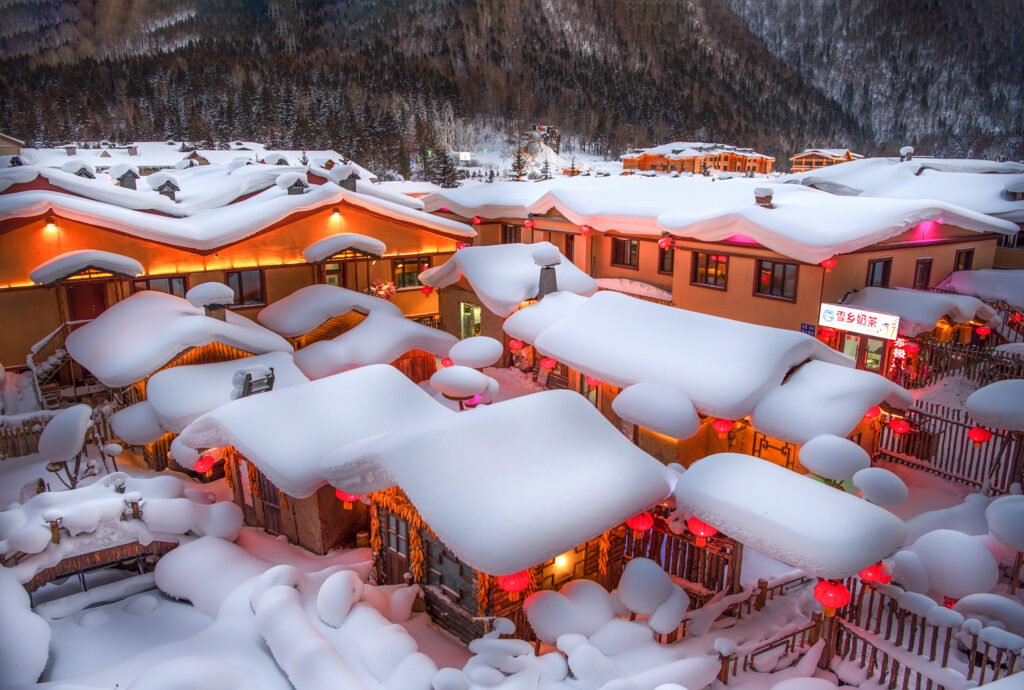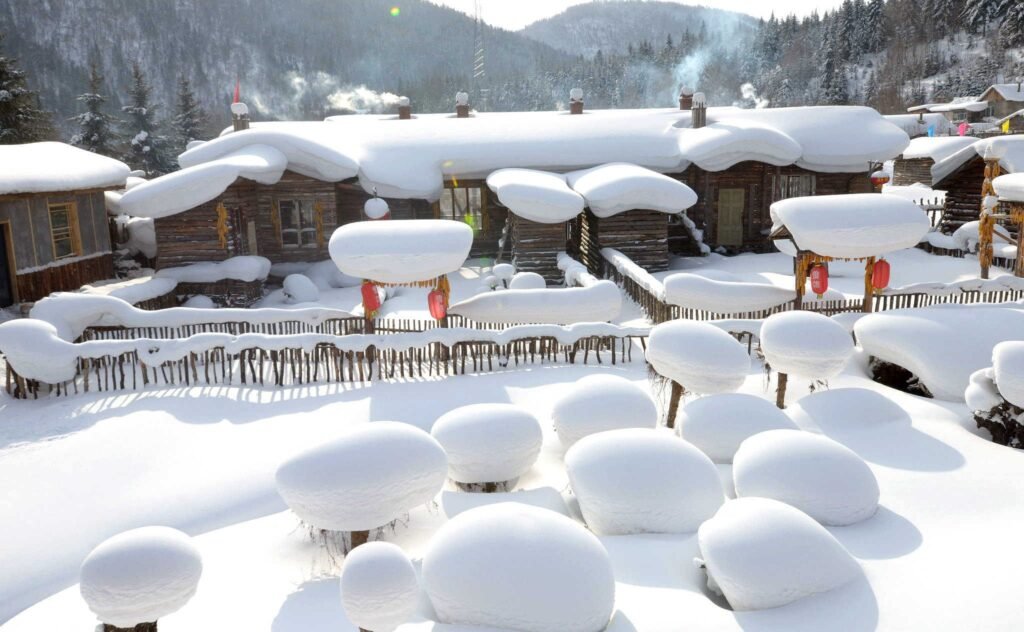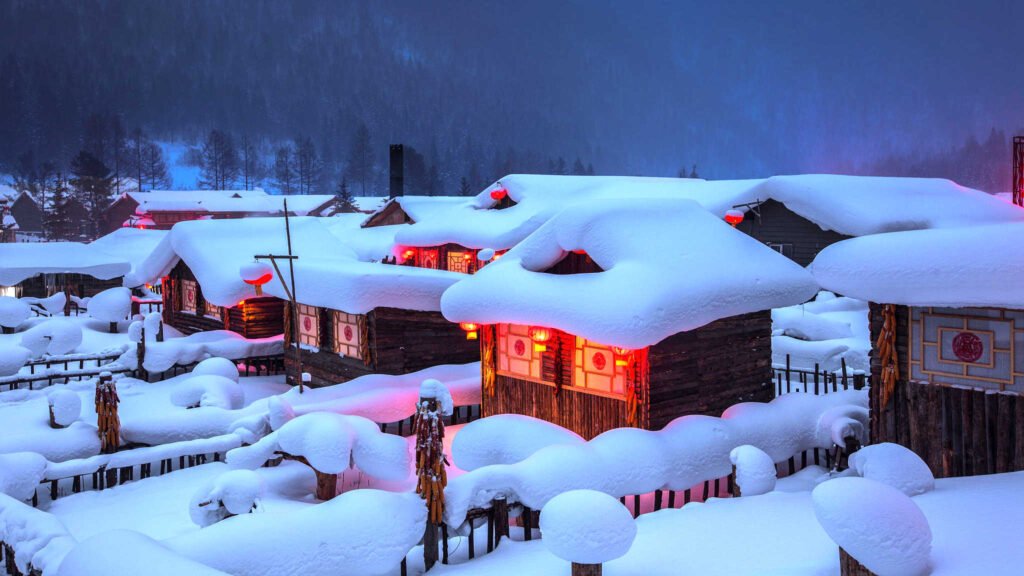Located in Heilongjiang Province, Snow Town (雪乡) is a captivating tourist destination known as the “Snow Capital of China.” The village, which sees snow cover for up to seven months of the year with an average thickness reaching two meters, has become increasingly popular among both domestic and international visitors. It is administratively part of Hailin City under Mudanjiang.

The village’s stunning snow landscapes are the result of its unique geographical location. Moist, warm air from the Sea of Japan converges here with cold air masses from Lake Baikal, bringing heavy snowfall to the region. Surrounded by mountains reaching 1,600 meters in altitude, Snow Town has a local climate described as: “In summer, no heat lasts more than three days; in winter, the forests are never without snow.” The snow here is sticky and dense, and with the wind’s effect, it forms natural snow sculptures—mushrooms, rabbits, turtles—on trees, rooftops, and almost every surface.

Often referred to as an “open-air museum” or “natural art gallery,” the town’s main street, Xueyun Street, is lined with traditional Northeast Chinese (Dongbei) wooden houses, boutique hotels, restaurants, and souvenir shops. The Dream Home (梦幻家园) is the best spot to view the most photogenic “snow mushrooms” and snow-covered courtyards. At night, illuminated by red lanterns, the place gives visitors the impression of stepping into a fairytale.
Snow Town offers a wide range of activities for visitors. The 300-meter-long Bangchui Mountain Viewing Path provides a bird’s-eye view of the village’s iconic “snow-covered rooftops.” Yangcao Mountain (Sheep Grass Mountain) is ideal for watching the sunrise and enjoying snowmobile rides or horse-drawn sleigh tours. The village is also home to the National Ski Training Base, where visitors can enjoy skiing, snowboarding, dog sledding, and snowshoeing.

Cultural experiences are equally rich. In the evenings, traditional Yangge dances and bonfire festivities take place. Tourists can also visit film studios where famous productions such as Taking Tiger Mountain (智取威虎山) and Where Are We Going, Dad? (爸爸去哪儿) were filmed. Local delicacies worth tasting include the “Eight Village Casseroles” (such as vermicelli casserole, chicken and mushroom casserole, catfish and eggplant casserole), frozen fruits (like frozen persimmons and frozen pears), and candied hawthorns.
The best time to visit Snow Town is between late December and late February, when the snow is at its deepest and the scenery most breathtaking. The most common route is to travel first to Harbin by plane or train, followed by a 5–6 hour bus ride. Alternatively, visitors can take a high-speed train to Yabuli and then a two-hour bus ride to reach the village. Accommodation is typically offered in traditional wooden houses featuring heated brick beds called kang.
While Snow Town is famous for its enchanting winter landscapes, its summer beauty is no less striking. From June onwards, the heavy snow gives way to lush green forests and colorful wildflowers, transforming the area into a vibrant natural painting. Known as a “natural oxygen bar,” it is an ideal summer retreat for city dwellers seeking cool, fresh air. With temperatures between 20–25°C, visitors can enjoy forest trekking, fishing in clear mountain streams, or experiencing the rhythms of traditional village life.





